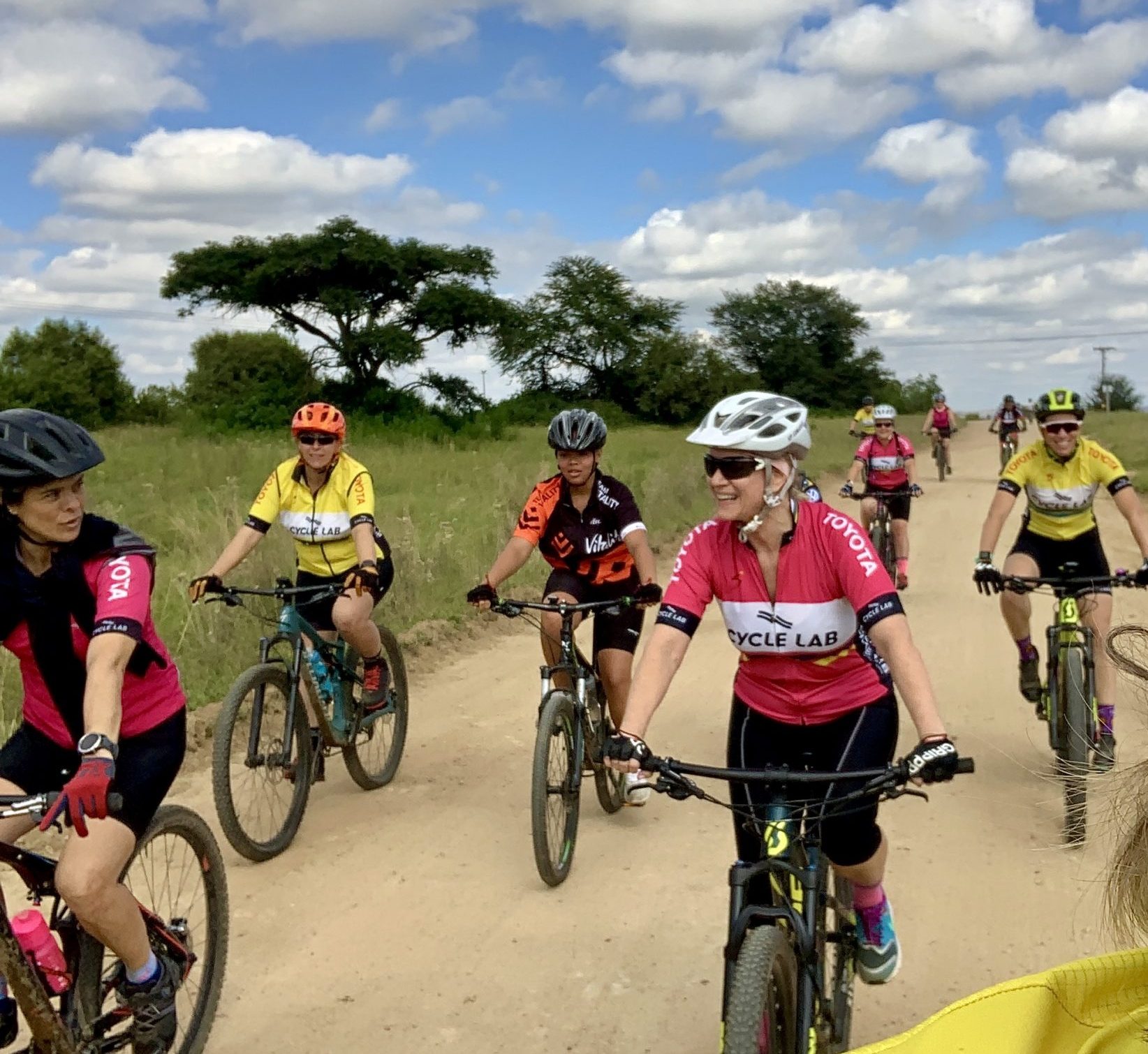It can be intimidating getting into mountain biking. There’s a lot to consider – a lot of new stuff, especially if you’re not from a cycling background. But it’s well worth it for the fun, exercise, friendships and freedom it brings. Here’s our nine-step plan to help you cut through the clutter.

By Joanne Badenhorst
- Borrow a bike and go riding with a friend. You don’t need all the gear, just make sure the bike isn’t too big or too small for you (get someone to adjust the saddle height). Go on a warm, sunny day on a tame trail or dirt road that’s not too steep up or down. You’ll feel excited, scared, uncertain, surprised and possibly a bit uncomfortable. But overall, you’ll have fun. If you want to have more of that, then mountain biking is probably for you.
- First, you need a bike. Decide on a budget then add another 25-30% for gear. What can you expect to pay? You can get a good second hand entry-level bike from as little as R5500, or a new one for around R9000. Buying new? Go to an established bike shop near you and don’t rush your decision. Narrow it down to three options and then ask your mountain biker friends what they think, or email me on joanne@treadmtb.co.za. Buying second hand? Get an experienced mountain biking friend or friend of a friend to help you. Key factors are size, suitability to your riding and condition of moving parts.
- Then you need gear. In order of importance, the basics are: helmet, padded cycling shorts, women-specific saddle (if the bike doesn’t come with one) and gloves.
- Get set up. Poor set-up will be uncomfortable, even painful and could result in you not having optimal control of the bike. Get at least a basic set-up done at your bike shop (if you bought new), or by a professional set-up business. It costs between R500-R1500 and should be seen as an investment, not a cost.
- Then do a skills clinic. Another R450 or so that could save you thousands in medical bills… Mountain biking can be high risk, so manage that risk by understanding how to control your bike. Need some advice on where you can book skills clinics near you? Email me on joanne@treadmtb.co.za
- Ride at least once a week. Meet someone to ride with. Ride tame singletrack trails (Green grading) or gravel roads and jeep track until you’re familiar with your gears, brakes and the physics of mountain biking. Then consider moving up to more challenging trails. Join a local club or ladies group if you don’t have a selection of mountain biking friends.
- Build cycling-specific power and fitness. Either do two indoor cycling classes a week or borrow a smart trainer from someone you know that’s not using theirs and ride twice week at home.
- On-the-bike nutrition is a minefield on its own, and every person has their own preferences. For short rides you don’t need much more than water in your bottle, and you shouldn’t need to pack a picnic either. For rides longer than 90 minutes, choose a high quality exercise specific drink, and a small snack if needed. Biogen has a good range: https://www.biogen.co.za/products/category/perform-x-range
- Enter a race. The excitement of a race is great. It also gives you a goal to work towards. Start with a short race (20-30km) and ride within yourself in the race. Aim to have a good time, rather than a fast time…

If you’ve reached this point, you’re fully committed and ready to invest more money and time into mountain biking. Upgrade your bike, find out what motivates you and do more of that – could be races, could be just riding with your friends or club, could be improving your health and fitness. Whatever it is, you’ll be able to confidently call yourself a mountain biker.


